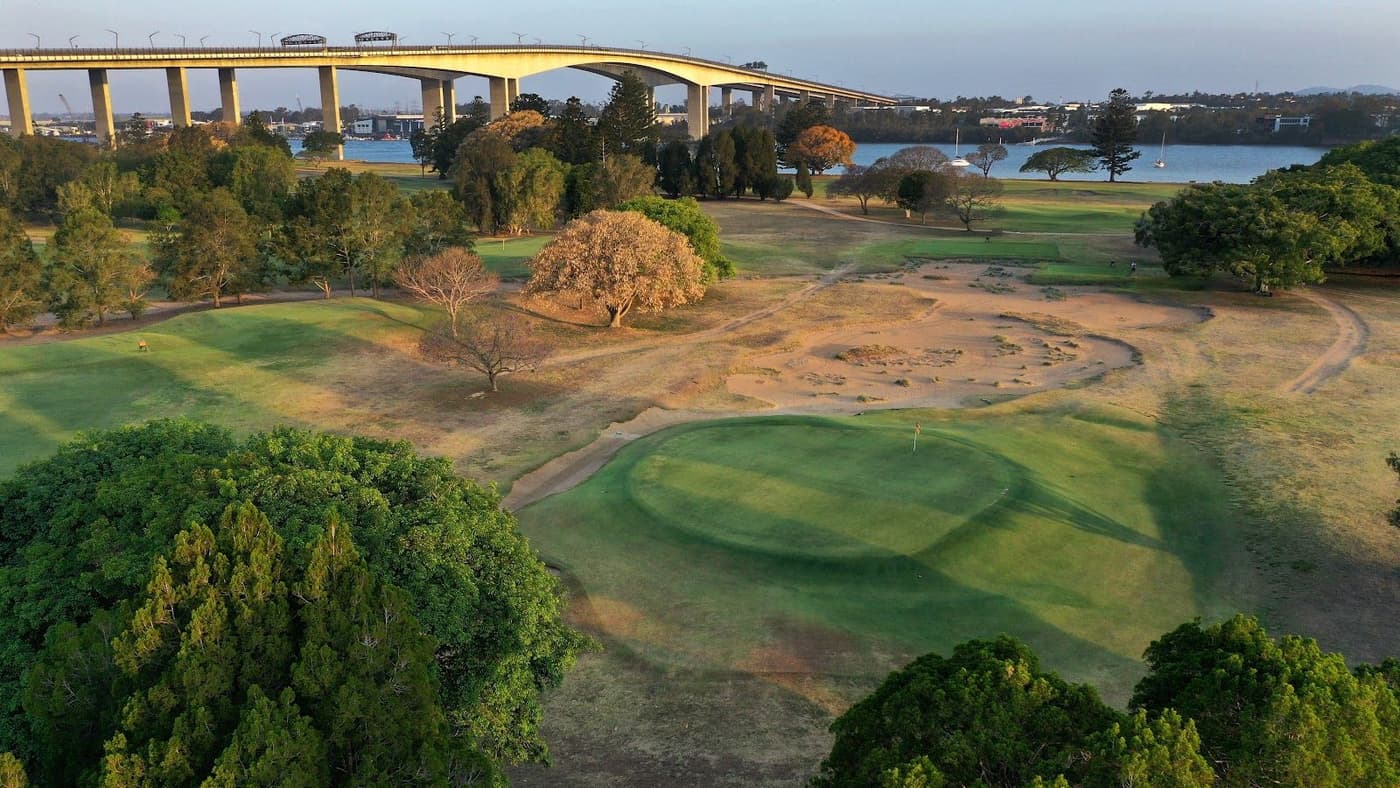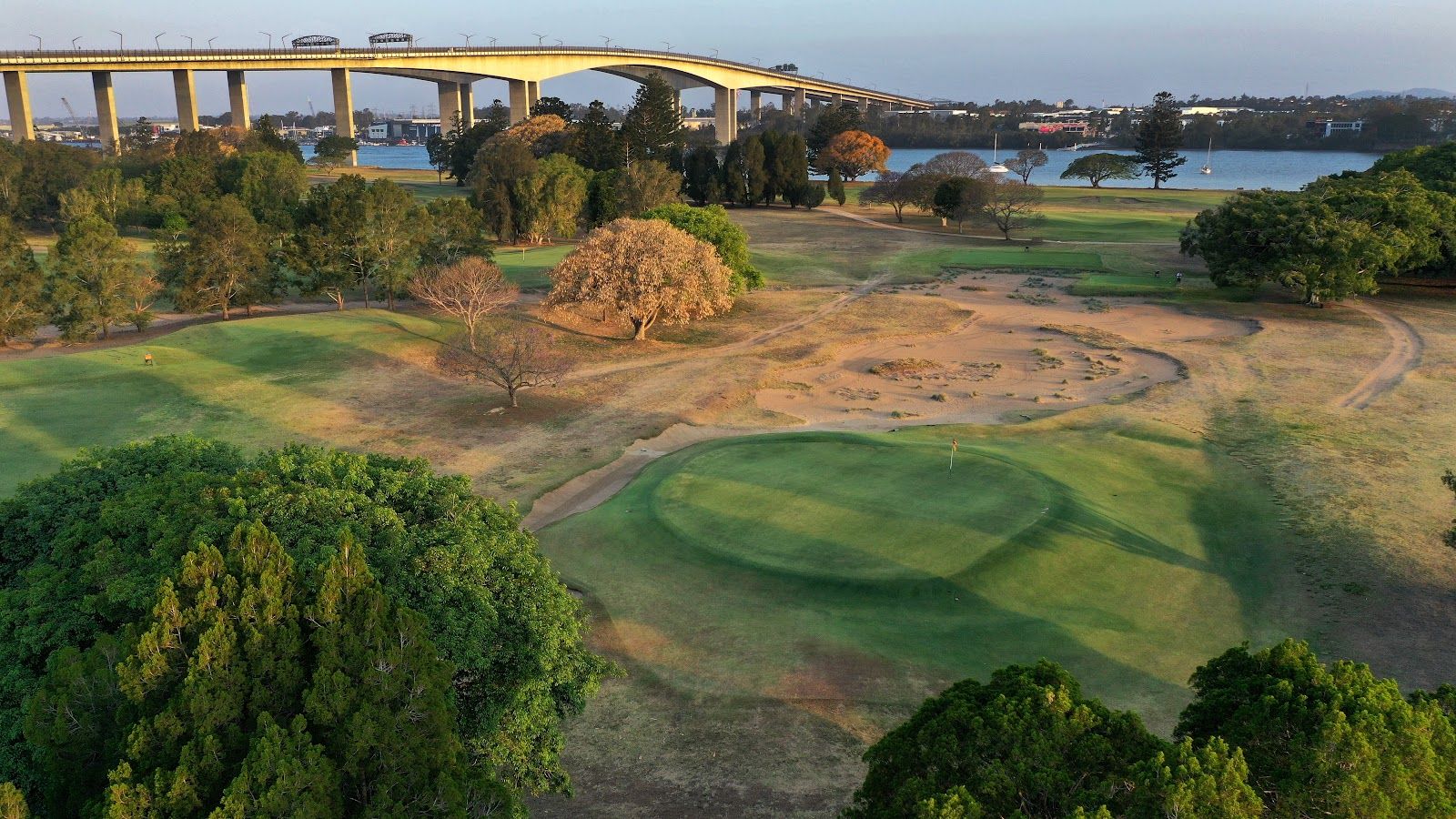- Courses
- Oceania
- Australia
- Queensland

- Address431 Curtin Ave W, Eagle Farm QLD 4009, Australia
- Championships hosted
Royal Queensland Golf Club was formed by a group of Brisbane golfers in 1920 and at the end of the following year their course was ready for play. Designed by Carnegie Clark, three-time Australian Open champion, the holes were laid out on a mangrove swamp at Parker Island on the banks of the Brisbane River.
Dr Alister MacKenzie is said to have advised on green and bunker modifications during a visit to the country in 1926, commenting that the course “might even compare favourably with some of the British championship courses… full of very fine golfing features,” but the extent to which he enhanced the design is debatable.
Michael Clayton extensively reconfigured the layout in recent times when a large part of the course was lost to the construction of a new bridge across the river. Sad though it was to lose these original holes, it gave the club the opportunity to completely redesign the entire course, effectively creating a brand new one.
Royal Queensland members have now seen their course transformed from one of moderate quality – laid out on a flat, uninspiring piece of land – into a strategic test that holds the interest from first tee until final green. The removal of trees, installation of distinctive bunkers and rerouting of holes has breathed new life into an old track, one that is now a pleasure to play.
The club hosted three Australian Opens in 1947, 1966 and 1973. Perhaps the nation’s premier professional tournament is due a return here some time in the future?
Architect Michael Clayton kindly wrote the following passage for Top 100:
Royal Queensland is a new course – even though there are seven holes that play in the same direction and along the same fairway corridors as the original course.
The par five 1st is a revised version of the old par four 10th, the 4th is a revised old 6th, the 5th is the old 5th rebuilt and the 6th is a much revised version of the old 3rd. The 8th is a revision of the original par three – supposedly the only original Mackenzie hole left but I would not place too much store in that story as he was probably there for less than a few days – and the 9th plays from the old 9th tee to the old 18th green. These are the only holes that bear any resemblance to the originals.
In the 1980s the course was split by the Gateway Bridge – the link across the river between the south and north of the city – and you played under it from the 12th tee then back under from the 17th. The six holes “on the other side” were lost when the government decided to replicate the bridge alongside the old one because traffic had become so heavy. The club had enough spare land to remain on the site and we rebuilt every hole – tees, bunkers and greens.
The 3rd, 11th, 12, 15th and 16th holes are built on land not previously used by the club. The 10th plays back up the old 18th, the 14th backward down the old 11th and the 18th goes back along the old 1st and 2nd holes.
The land is essentially flat although there is some interesting small crumpled undulation on a few of the original fairways and the aim was to build wide holes with fairway bunkers positioned strategically to suggest there was an ideal line into the green but one that would generally only be opened up by those who had driven close to the bunkers.
Three of the par fives, at 6, 16 and 18, employ fairway bunkers in the middle of the fairway, forcing golfers to make a decision about how best to proceed and those choices will vary, depending on the conditions and the player. There was a deliberate policy to avoid the use of rough – creating wide expanses of fairway where the player is given the choice of where to play – as opposed to having the line dictated by the architect. The unthinking criticise the course for being too wide but you can’t play to the flags from the wrong angles unless you hit exceptional shots – shots that are much more difficult than those played from the correct angles.
Update Sept 2012 – John contacted us to let us know the course now plays in reverse so the hole numbering has changed from 1 to 10 etc.
Course Reviews
Leave a Review
This course has not been reviewed.
If you have played this course, consider .
Thanks for the review
Your review has been successfully submitted and will be reviewed for approval.
Course Reviewed
You’ve already submitted a review for this course.
Course Architect
View All
Playing on Melbourne’s sand belt courses as a young man sparked an early interest in golf course architecture for Mike Clayton so it was a natural progression for him to form his own design practice.



